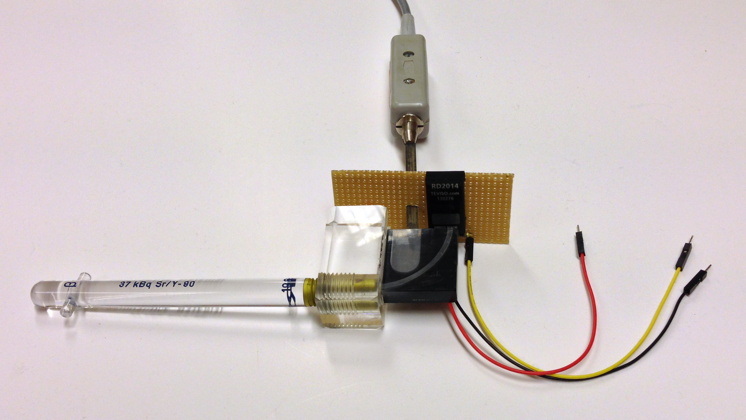
This describes the workings of the Linné Web-Operated Beta Spectrometer. It is a course lab experiment at Linnæus University for distance students. Students can set the magnetic field using a web browser for measuring the beta energies of Yttrium-90. The server gives the number of counts detected by the magnetic spectrometer. An ip-camera displays readings of the magnetic field.
The interface to the experiment is this Processing sketch that runs on an Arduino Due microcontroller. The Due has two analog-to-digital converters. The voltage difference between these two outputs runs from -2 to + 2 V. It is then amplified by a power output stage to supply up to 2.5 A of current to the electromagnet. The electrical pulses from the β-detector are connected to a digital input that triggers an interrupt service routine. An Ethernet shield manages the connection to the internet. The program serves html pages in response to http GET and POST requests and it parses user input.
Magnetic fields deflect charched particles by the Lorentz force. For relativistic electrons the kinetic energy can be calculated by
where B is the magnetic field in tesla and r is the radius of curvature in centimeters. Our spectrometer consists of a track in an acrylic plate. The inner radius of curvature of this 90° arc is 28 mm, its outer radius is 30 mm.

The β-particles are detected by the RD2014 solid-state radiation detector. It has several advantages over a Geiger-Müller tube. The most important one here is that it is much less sensitive to the gamma radiation from the radiactive source.